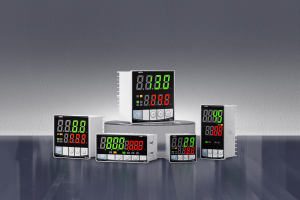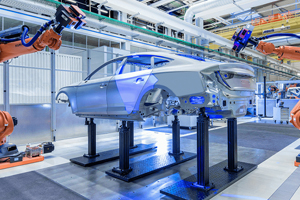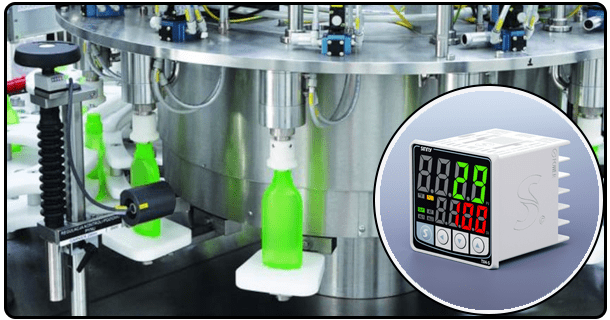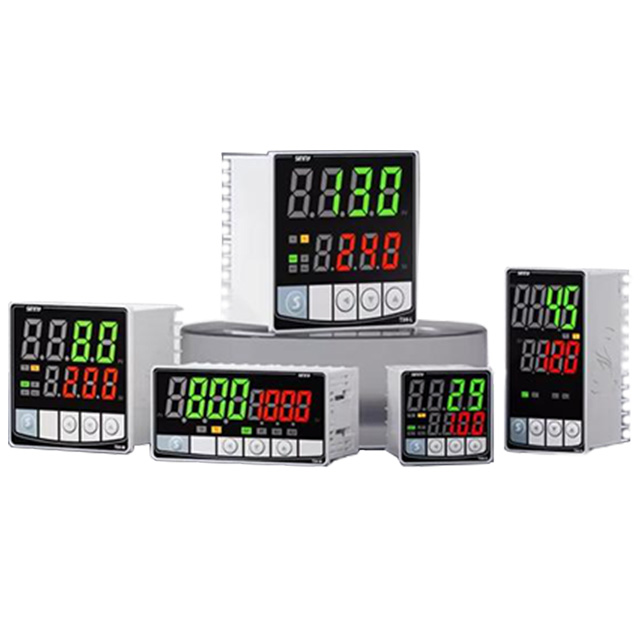The Ultimate Guide for 240V Temperature Control: Features, Benefits & Applications
Discover the complete guide for 240V temperature controllers. Learn about their applications, features, advantages, selection criteria and installation and maintenance to achieve precise temperature control for industrial, laboratory and commercial settings.
1. The following is a brief introduction to the topic:
This guide is designed to give a comprehensive understanding of the 240V temperature controllers. It will detail their features, applications, advantages, selection criteria and installation instructions. The reader will be able to gain the necessary knowledge by examining this topic. They will also learn the benefits of using such advanced control devices.
2. What is PID temperature controller?
The PID controller is a complex feedback loop designed to control a variable in a process, such as temperature. It does this by controlling an output device. Its effectiveness is attributed to its Proportional, Integral, and Derivative algorithm, which constantly calculates corrective actions based on the differences between the setpoint temperature and actual temperature. The PID algorithm uses this error signal to produce an output which manipulates the heating element or cooling system, thus bringing process temperatures back toward the setpoint.
proportional (P). addresses the present error by applying a change in output that is proportional to its magnitude. The output change is more important when the error magnitude increases. The integral (I) components focus on previous errors and integrate them over time in order to eliminate errors at steady state that the proportional terms alone may not be able to completely correct. The system is prevented from reaching a temperature that's slightly off the setpoint. The derivative (D) predicts errors in the future based on changes to the error rate. This helps dampen oscillations, and reduces overshooting as the system nears the setpoint. The PID controller can react quickly to change, fix deviations, and regulate temperature accurately and consistently with this triad.
3. Features of a PID temperature controller for 240V
The 240V PID controllers are designed to manage temperature precisely while dealing with higher voltages, which can be found in commercial and industrial settings, as well as certain residential ones. These controllers are distinguished by their following features:
Precision temperature control: This controller is renowned for its ability to keep temperatures very close to setpoints. These controllers often use high-resolution sensor technology and microprocessor technology in order to maintain high accuracy. This is crucial when it comes to processes that are sensitive to temperature fluctuations.
User Friendly Interface: Modern PID temperature controls typically have intuitive interfaces that include digital displays, menus and easy navigation. Operators can easily adjust temperatures and monitor conditions. They can also view errors messages.
Features of Safety: The safety is paramount for temperature control systems that operate at 240V. These controllers are often equipped with multiple safety features. They may have overheating alarms and high/low limits (which shut down outputs if the temperature exceeds safe boundaries) as well as robust enclosures to protect users and internal components from electrical hazards.
4. You can use 240V temperature controllers for a variety of applications
Lab Settings: Research and Development often requires highly controlled thermal conditions. The temperature is controlled by 240V controllers to maintain the stability of the environment chambers and incubators.
HVAC System: Although standard residential HVAC systems are often controlled in a different way, 240V controllers for commercial HVAC can be used, especially for large heating, ventilation and air conditioning units or specific zones that require very precise temperature control.
Home automation: Advanced home automation systems can provide superior temperature control, integration, and integration abilities compared with basic thermostats. This is especially true for properties that have high-end heating options like electric heaters, heat pump, or HVAC units.
5. The Benefits of using a PID temperature controller 240V
Savings on Operational Costs: Combining energy efficiency with reduced manual intervention and corrective measures directly contributes to lower operating costs. Moreover, preventing temperature-related damages to materials or equipment can save money on repairs and replacements.
Simple Integration into Existing Systems Many PID temperature control systems feature communication protocols that are standard (such as analog outputs or digital inputs/outputs or network connectivity), which allow seamless integration with existing building, industrial or laboratory management systems.
6. What to Look for When Choosing a 240V Temperature Control?
The controller should be placed in a space that is suitable for it. Also, consider the environment conditions and physical dimensions of the area.
Features You Should Look for: Assess the accuracy of the controller, which is usually expressed in percentages. Consider features such as a high resolution display, an easy to use programming interface, strong safety certifications like CE or UL, and alarms. If integration is required with a larger systems (e.g. Modbus or RS485), check for communication capability.
Cost and Budget Factors : Performance and reliability is paramount but cost also plays a major role. Compare features, warranties and price from suppliers you trust. A higher investment for a quality control system may lead to lower operating costs over the long term and less replacements.
7. Install and Setup Guide
Installation and initial setup is essential to ensure the safety and effectiveness of your 240V temperature controller. Installation should be performed by an electrician due to the high voltage.
Installation Step by Step: A typical installation involves the connection of the temperature sensor to the controller, according to manufacturer instructions. The 240V supply should be connected next to the controller. This will ensure correct wiring, and that the local electrical code is followed. The controller output terminals must then be wired to the load that will heat or cool the room (e.g. heating element, chilleder). The connections should be properly and securely insulated.
Configuring the Controller after Physical Installation: After physical installation, the controller must be configured. The controller must be configured to the required temperature, the type of sensor and its calibration, the mode it will operate in (heating or cooling or both) and any other advanced features such as ramp rates and interlocks. The controller manual provides detailed setup instructions.
Tips to Ensure Optimal Performance For optimal performance, position the sensor at a temperature representative of your process and away from heat sources or direct drafts. The manufacturer recommends that you calibrate your sensor and controller regularly. Clean the controller and keep it free of dust.
8. Maintenance and troubleshooting
For a PID temperature control 240V to operate and last, it is important that you perform regular maintenance.
Maintenance Routines: The maintenance routine should consist of checking all connectors for tightness, signs of damage and cleaning up the case, sensor inputs and controller to avoid dust accumulation, as well as ensuring that the sensor functions correctly and has been calibrated properly. The controller operation logs may also be reviewed to identify any potential problems early.
When Professional Assistance is Needed: Consult a professional technician if basic troubleshooting fails to resolve an issue or there are any concerns about electrical safety. It can be hazardous to attempt complex repairs without having the required expertise.
9. Customer Case Studies
Real-world implementations of temperature controllers 240V PID can be a valuable source of information about their benefits.
Examples of Real-World Implementations that Work: As an example, a metal-fabrication company with a high-power PID controller for its forging ovens replaced their outdated thermostat system. The upgrade led to a significant improvement in temperature uniformity and reduced energy consumption. It also improved product quality. A university research facility used 240V controllers to control their environmental chambers. This enabled them to achieve the exact and stable conditions needed for sensitive biological tests, leading more reliable results.
Testimonials from Users and User Feedback Many users express their satisfaction about 240V PID Controllers. They highlight the reliability of these controllers and how easy they are to use. In addition, many comment on significant improvements that can be achieved in terms of process control. In feedback, users often mention the reduced operational costs and ability to comply with strict temperature requirements. The testimonials show the importance of these controllers in various contexts.
10. The conclusion of the article is:
Conclusion: 240V temperature controllers with PID represent an effective solution that is reliable for high-power applications that require precise temperature regulation. The combination of their sophisticated PID algorithms, high-voltage compatibility, easy to use interfaces and robust safety functions makes them an indispensable tool in industrial, laboratory and commercial settings.
- DC PID temperature controller
- This detailed overview of the 4 channel PID temperature controller will give you a better understanding























